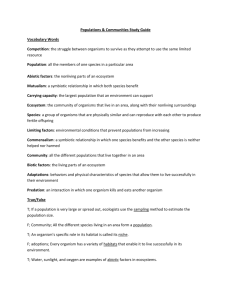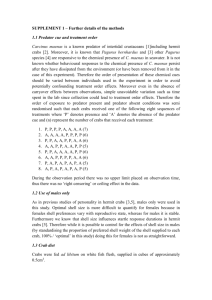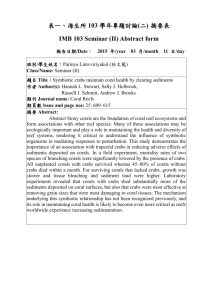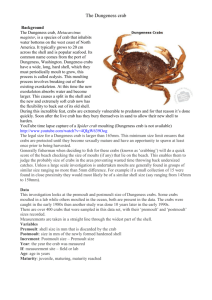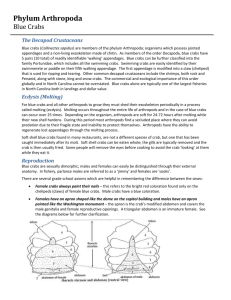Mud Crabs, - Competition experiment and
advertisement
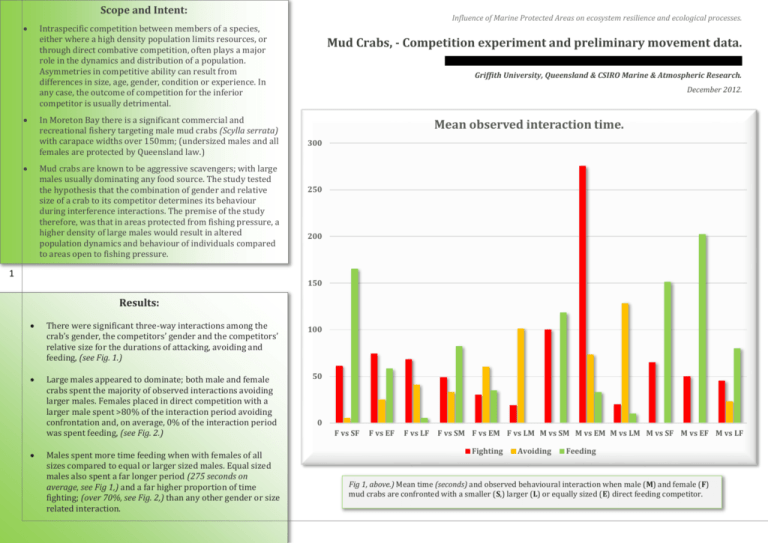
Scope and Intent: Influence of Marine Protected Areas on ecosystem resilience and ecological processes. Intraspecific competition between members of a species, either where a high density population limits resources, or through direct combative competition, often plays a major role in the dynamics and distribution of a population. Asymmetries in competitive ability can result from differences in size, age, gender, condition or experience. In any case, the outcome of competition for the inferior competitor is usually detrimental. In Moreton Bay there is a significant commercial and recreational fishery targeting male mud crabs (Scylla serrata) with carapace widths over 150mm; (undersized males and all females are protected by Queensland law.) Mud crabs are known to be aggressive scavengers; with large males usually dominating any food source. The study tested the hypothesis that the combination of gender and relative size of a crab to its competitor determines its behaviour during interference interactions. The premise of the study therefore, was that in areas protected from fishing pressure, a higher density of large males would result in altered population dynamics and behaviour of individuals compared to areas open to fishing pressure. 1 Mud Crabs, - Competition experiment and preliminary movement data. R. Connolly, K. Pitt, D. Rissik, A. Olds, P. Maxwell, D. Burfeind, C. Beattie & R. Babcock. Griffith University, Queensland & CSIRO Marine & Atmospheric Research. December 2012. Mean observed interaction time. 300 250 200 150 Results: There were significant three-way interactions among the crab’s gender, the competitors’ gender and the competitors’ relative size for the durations of attacking, avoiding and feeding, (see Fig. 1.) Large males appeared to dominate; both male and female crabs spent the majority of observed interactions avoiding larger males. Females placed in direct competition with a larger male spent >80% of the interaction period avoiding confrontation and, on average, 0% of the interaction period was spent feeding, (see Fig. 2.) Males spent more time feeding when with females of all sizes compared to equal or larger sized males. Equal sized males also spent a far longer period (275 seconds on average, see Fig 1,) and a far higher proportion of time fighting; (over 70%, see Fig. 2,) than any other gender or size related interaction. 100 50 0 F vs SF F vs EF F vs LF F vs SM F vs EM F vs LM M vs SM M vs EM M vs LM M vs SF M vs EF M vs LF Fighting Avoiding Feeding Fig 1, above.) Mean time (seconds) and observed behavioural interaction when male (M) and female (F) mud crabs are confronted with a smaller (S,) larger (L) or equally sized (E) direct feeding competitor. 2 Fighting behaviour between females tended to be less intense and shorter lived; consisting largely of pushing, compared to fighting between males. A possible explanation for these differences is that male mud crabs are inherently more aggressive and are better adapted morphologically and physiologically for intense and prolonged fighting. There was a significant correlation among both genders for time spent feeding to be negatively associated with time spent avoiding other crabs. The behaviours of mud crabs matched with an opponent of the same gender but differing relative sizes were generally similar to those observed in other species of crabs. Both male and female mud crabs dominated smaller crabs of the same gender, causing them to spend more time avoiding, and crabs that were similar in size and gender spent the most amount of time attacking. In addition to the recorded relevant interactive behaviours, all crabs, regardless of their gender and relative size of competitor, spent similar amounts of time exhibiting threatening behaviour (average 57 ±5.8 sec.) Crabs spent the remaining time (average 64 ±1.6%) inactive on top of the sand or slowly moving around the tank. Influence of Marine Protected Areas on ecosystem resilience and ecological processes. Mean proportion of observed crab interaction to competitor. M vs LF M vs EF M vs SF M vs LM M vs EM M vs SM F vs LM F vs EM F vs SM F vs LF F vs EF F vs SF 0% Fig 2, right.) Proportion (%) of observed interaction time when male (M) and female (F) mud crabs are confronted with a smaller (S,) larger (L) or equally sized (E) direct feeding competitor. 10% 20% 30% 40% Fighting 50% Avoiding 60% 70% 80% 90% 100% Feeding Conclusions: The results of the study supported the hypothesis that the size and gender of mud crabs have important consequences for how they respond to competitors in the presence of food. Large Males did appear to dominate; any smaller male or female in a competitive interaction with a larger male tended to spend a large portion of time avoiding confrontation and consequently spent less time feeding. Despite potential differences in the behaviour of crabs in the laboratory and in more ‘natural’ conditions, a reasonable progression from the study results might be that in a marine reserve where densities of large male mud crabs are shown to be significantly higher than surrounding areas, ecosystem processes could be altered. Intense competition for food resources might result in deleterious competitive interactions for female and small male mud crabs. Smaller males and females could consequently be forced to alter their foraging behaviour or migrate to areas where there is less chance of encountering high densities of large males, such as open areas, beyond the boundaries of small marine reserves. In addition to mud crabs, many other species of crabs are subjected to size and gender selective fisheries. Where size dependent sexual dimorphism occurs in other crab species, interactions between large and small males and females could have similar outcomes to those observed in this study. Individual female and small male crabs may therefore also be affected by more intense competition with large male crabs within protected areas. Finally, the results of this study prompt further research into the potential indirect effects of manipulating the structure of populations through size and gender selective fisheries and the establishment of marine reserves.

